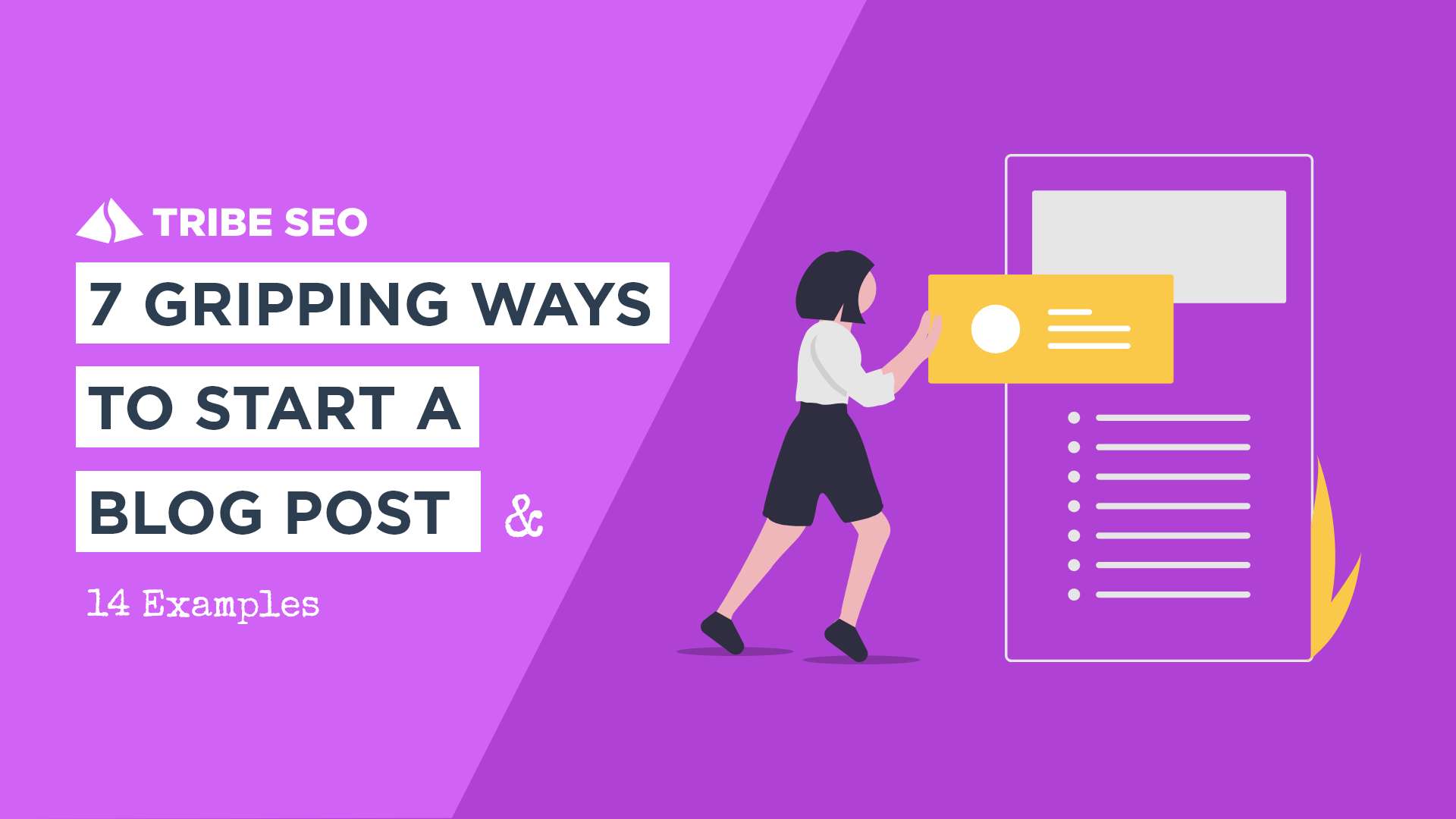

Image from Flickr by Johan.V
Do your posts grab the reader right from the first line?
If not, they need to! A compelling title is a great first step – but your post introduction needs to build on it, drawing the reader in and convincing them that your post is worth their time.
Here are seven powerful (and straightforward) ways to start off your posts.
If you glance back up, you’ll see I opened this post with a question:
“Do your posts grab the reader right from the first line?”
Look out for question openings as you read blog posts today – you’ll find it’s a really popular technique, and with good reason.
Questions force the reader to engage. They get an intellectual or emotional response. They start a dialogue.
Plus, they’re easy to do well. I can’t think of any instances when I’ve seen a question opening that doesn’t work.
“Ever send a pitch email to a blogger in your field asking them to share one of your blog posts – and get no response?”
(Alexis Grant, Warming Up Your Network So No One Can Turn You Down, Firepole Marketing)
“Are you looking to grow your LinkedIn network?”
(Melonie Dodaro, 6 Ways to Grow Your LinkedIn Connections, Social Media Examiner)
Need a pithy, snappy, profound or inspiring opening to your post? If (like me!) you struggle to manage any of those in your own words, borrow from someone else.
You could quote an industry expert, a pop culture figure, a great thinker, a poet … anyone who’s said something meaningful that fits with the theme of your post.
Make sure you either put the quote in <blockquote> formatting, or you use quotation marks. Immediately before or after the quote, include the name of the person who said it. (You might also include a link to the source online.)
“Happiness often sneaks in through a door you didn’t know you left open. – John Barrymore”
(Andrew Cain, You Deserve to Be Happy, The BridgeMaker)
“You know the old saying, ‘Any publicity is good publicity.’ Is it true though?”
(Daniel Scocco, When Does Bad Publicity Help Sales?, DailyBlogTips)
This technique isn’t quite so fool-proof as the question and quote openings, but it can be a very powerful way to start off your post – or even a piece of sales copy.
Begin your sentence with the word “Imagine” (or an equivalent like “What if”) and paint a picture for the reader. For instance:
Imagine having an empty inbox and being fully up-to-date on all your emails.
Okay, that might not be the most exciting picture ever – but you’ll probably agree it’s an attractive one!
This opening works really well when you want to get the reader to recognise the value of the information you’re about to give them. Like asking a question, it’s also a way to get them instantly engaged with your content.
“Just imagine for a second you could make all your dreams come true, achieve anything you want and succeed in all your undertakings.”
(Robert Spadinger, The Science of Getting What You Want: 7 Simple Steps to Help You Achieve Anything You Want, Dumb Little Man)
“What if you could predict the future? Wouldn’t that make you a much better photographer?”
(Dan Bailey, Anticipating Great Images, Digital Photography School)
Facts and figures might seem dry – but an interesting, shocking, or unusual statistic can be a great way to begin your post.
For instance, if you wrote a post about social media, you might begin it with:
Facebook has 1.26 billion users – that’s almost the population of China. (source)
As well as hopefully getting a reaction, statistics and numbers can help indicate to readers that you’ve done your research and your post is worth reading.
“A parade of 50 cars carrying 100 people showed up at an Oregon high school to support a bullied teen after his aunt made a plea for help on Facebook.”
(Fran Berkman, Bully Apologizes After Aunt Asks Facebook Group to Support Nephew, Mashable)
“When we first launched the Content Marketing Institute (CMI) back in 2007, we had little more than two nickels to rub together. Today, the site averages 130,00 unique visitors per month, almost 300,000 page views, and more than 50,000 email newsletter subscribers (both daily and weekly).”
(Joe Pulizzi, How to Create an Influencer Plan that Drives Your Content Marketing, Copyblogger)
By starting with a short, personal story, you can draw readers into the main body of your post. We’re hard-wired for story, and done well, this type of opening can be very effective.
Bringing in a little bit about you (or your company) is also a great way to help readers feel a sense of connection to you.
This works best if your story is funny or dramatic. A story about how you’re sitting in a coffee shop, eating a bagel and trying to write a post isn’t going to be particularly engaging, unless you’re a very good writer.
Examples:
“Two months ago my wife, Vanessa, started to blog.”
(Darren Rowse, How Posting a Humble ‘Selfie’ Grew Traffic, Shares and Comments on a New Blog, ProBlogger)
“‘Forget the schedule. This post sucks.’ That’s the refrain I repeat to myself at least once a week.”
(Demian Farnworth, 5 1/2 Reasons You Should Kill a Draft Blog Post, Copyblogger)
Once your blog has a readership, you’ll find that you get comments and emails from readers with questions or problems.
Along with any questions your customer support team gets, these make fantastic openings for blog posts.
By putting a reader’s question up front, you show other readers (and prospective customers) that you’re willing to take the time to help. Plus, a post that answers a real-life question is likely to be one that lots of your readers find useful.
“The other day, someone asked me this question: ‘What’s the key to produce outstanding content?’”
(James Chartrand, The Key to Producing Outstanding Content, Men with Pens)
“Here are several questions from DailyWritingTips.com readers about hyphenation, followed by my responses.”
(Mark Nichol, Answers to Questions About Hyphens, DailyWritingTips)
This technique is one we recommend you use sparingly, and with good reason. In fact, some business may never want to use it at all.
A controversial or provocative statement might attack a particular viewpoint in your industry, or even a particular figure. It could tell readers that something they thought they knew is totally wrong.
This has the power to get your post a lot of attention – but it could backfire if you’re stirring up trouble just for the sake of getting links and tweets. You need to be able to back up what you say.
“No matter how great of a designer, marketer, or copywriter you are, your website is never going to convert as well as it could.”
(Neil Patel, 7 Things Every (Great) Landing Page Needs, Quick Sprout)
“Jesus, relationship advice for women is the worst.”
(Ramit Seith, Why Won’t Anyone Be Honest With You?, I Will Teach You to Be Rich)
Which of these techniques will you use in your next blog post? Let us know in the comments!
If you’d like to learn more about writing great blog posts and web pages, check out our write well online course – it’s suitable for total beginners and for people with some web writing experience.
Designed, Built and Optimised by Joe the SEO
© Tribe SEO is a registered UK Company (# 07455058). Privacy Policy and Terms.
This site is protected by reCAPTCHA and the Google Privacy Policy and Terms of Service apply.